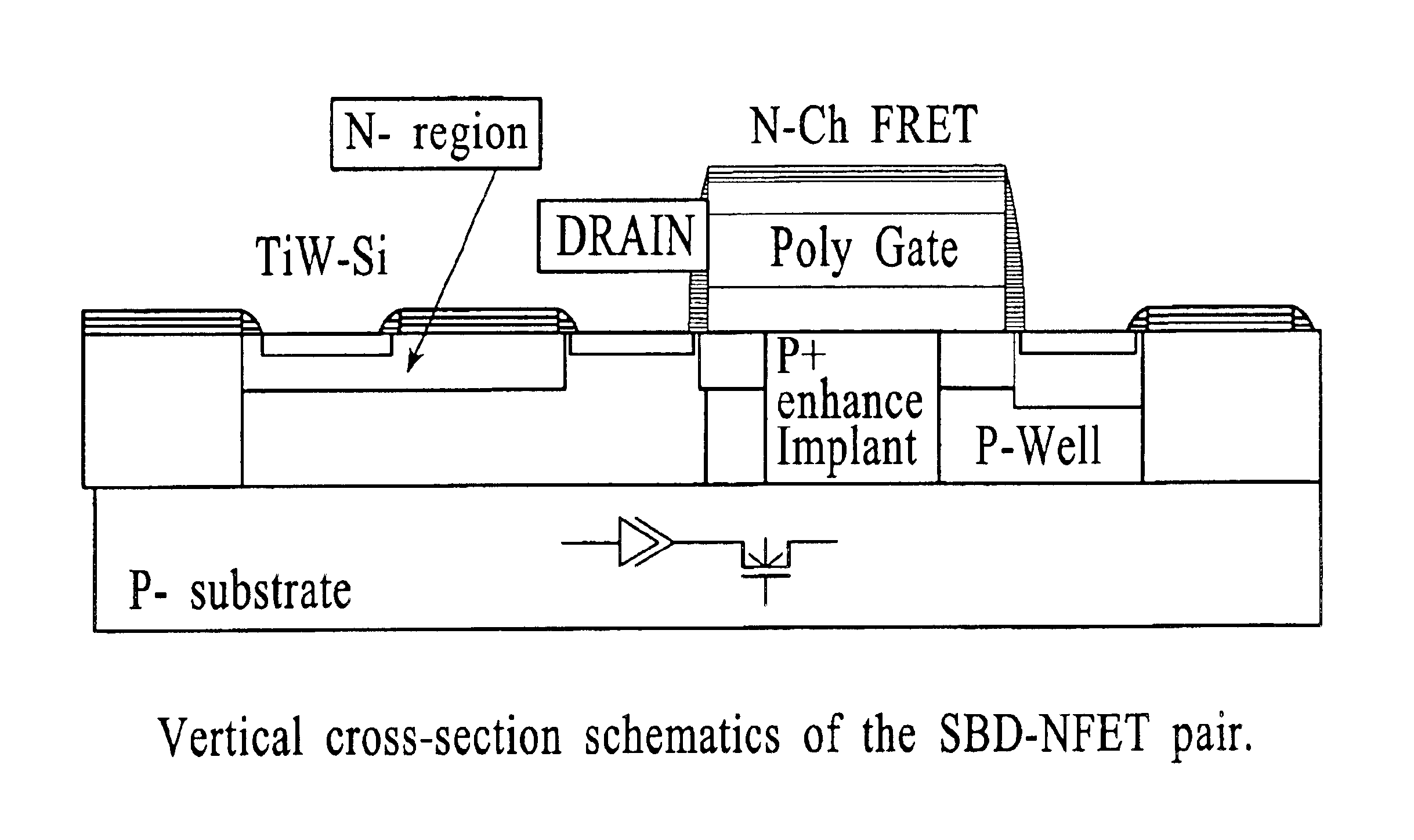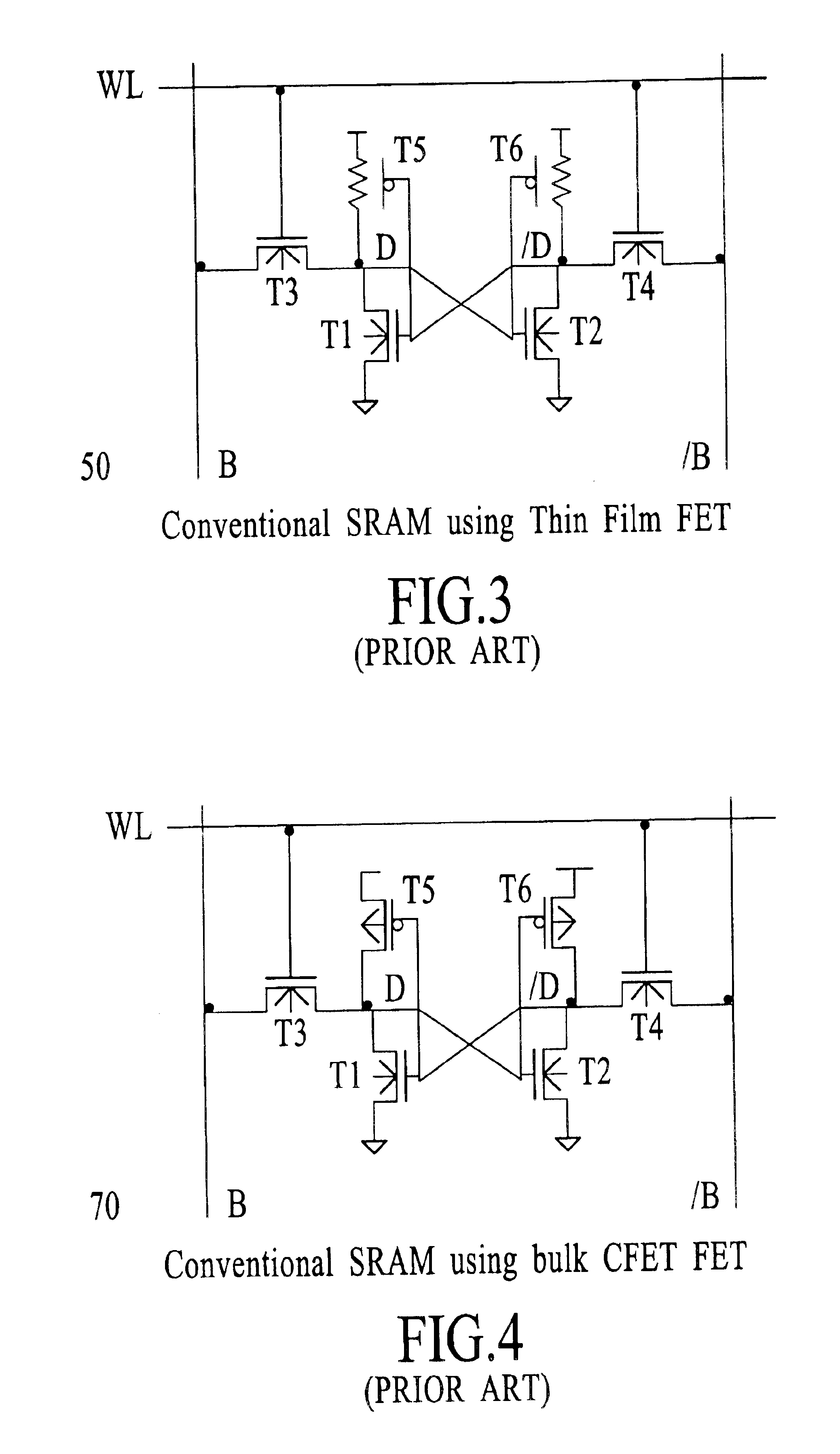Schottky diode static random access memory (DSRAM) device, a method for making same, and CFET based DTL
a static random access memory and diode technology, applied in semiconductor devices, digital storage, instruments, etc., can solve the problems of resistors consuming dc current, slow and unreliable holding information, and suffer from leakage, etc., to achieve stable load curve, less area, and faster than cfet design
- Summary
- Abstract
- Description
- Claims
- Application Information
AI Technical Summary
Benefits of technology
Problems solved by technology
Method used
Image
Examples
Embodiment Construction
The present invention relates generally to memory devices and in particular to the circuit design, device design, and processing technology of the high speed, high density, and low power physical constructs for memory cores, IO data buffer arrays, and control blocks.
The following description is presented to enable one of ordinary skill in the art to make and use the invention and is provided in the context of a patent application and its requirements. Various modifications to the preferred embodiment and the generic principles and features described herein will be readily apparent to those skilled in the art. Thus, the present invention is not intended to be limited to the embodiment shown but is to be accorded the widest scope consistent with the principles and features described herein.
A high speed Static Random Access Memory Array which includes a 4-T cell and two Schottky Barrier Diodes (SBD) is disclosed (FIGS.5 and 6). In a preferred embodiment, the cell bulk area / speed advant...
PUM
 Login to View More
Login to View More Abstract
Description
Claims
Application Information
 Login to View More
Login to View More - R&D
- Intellectual Property
- Life Sciences
- Materials
- Tech Scout
- Unparalleled Data Quality
- Higher Quality Content
- 60% Fewer Hallucinations
Browse by: Latest US Patents, China's latest patents, Technical Efficacy Thesaurus, Application Domain, Technology Topic, Popular Technical Reports.
© 2025 PatSnap. All rights reserved.Legal|Privacy policy|Modern Slavery Act Transparency Statement|Sitemap|About US| Contact US: help@patsnap.com



